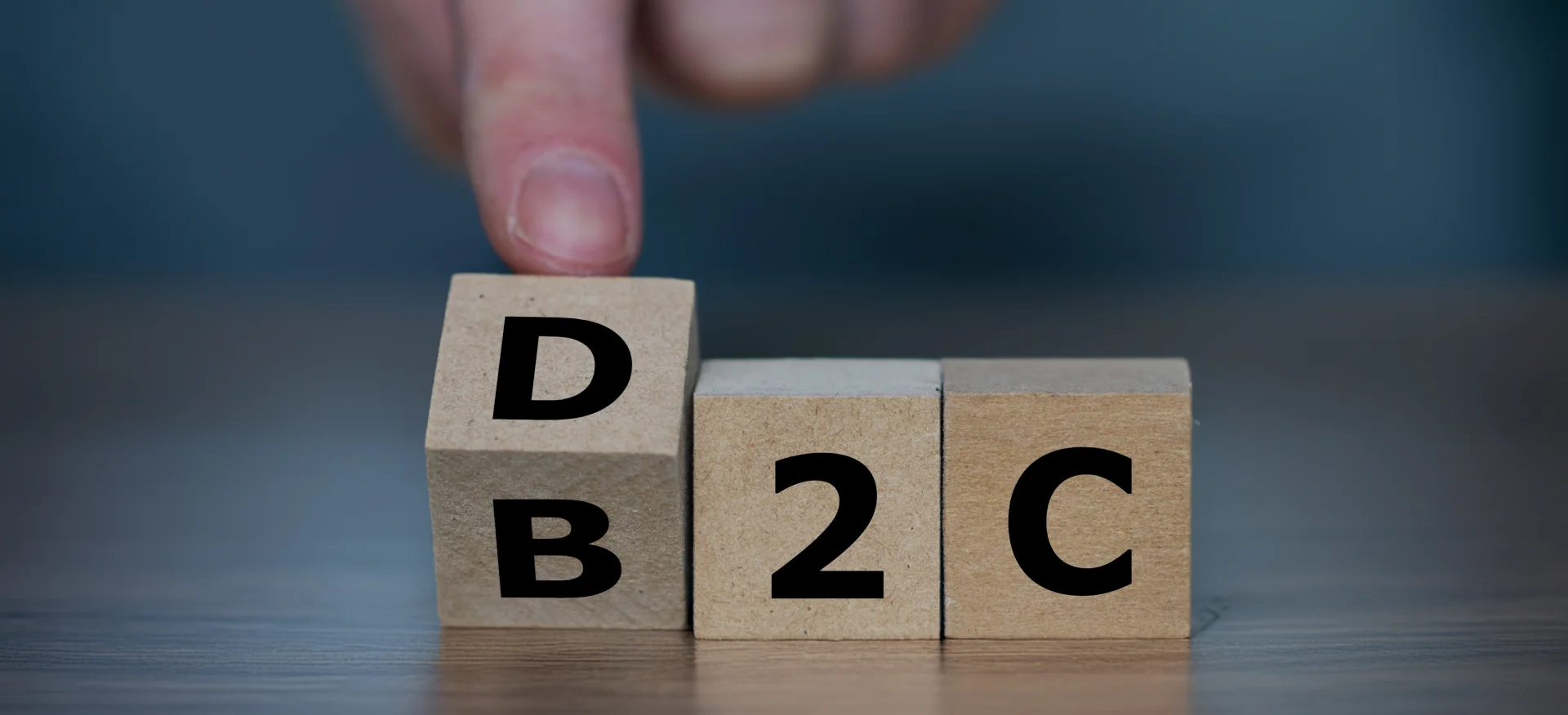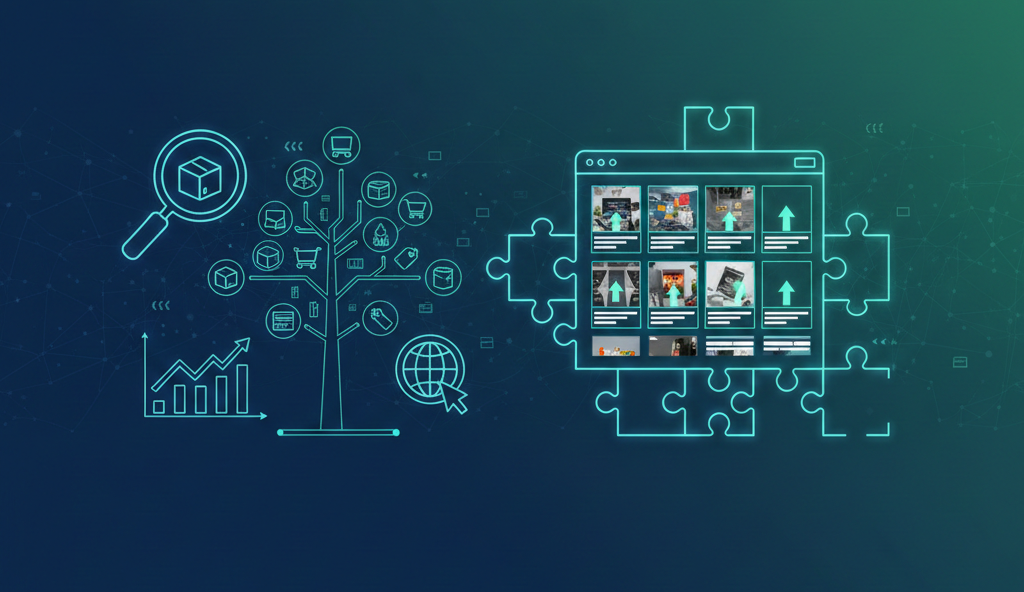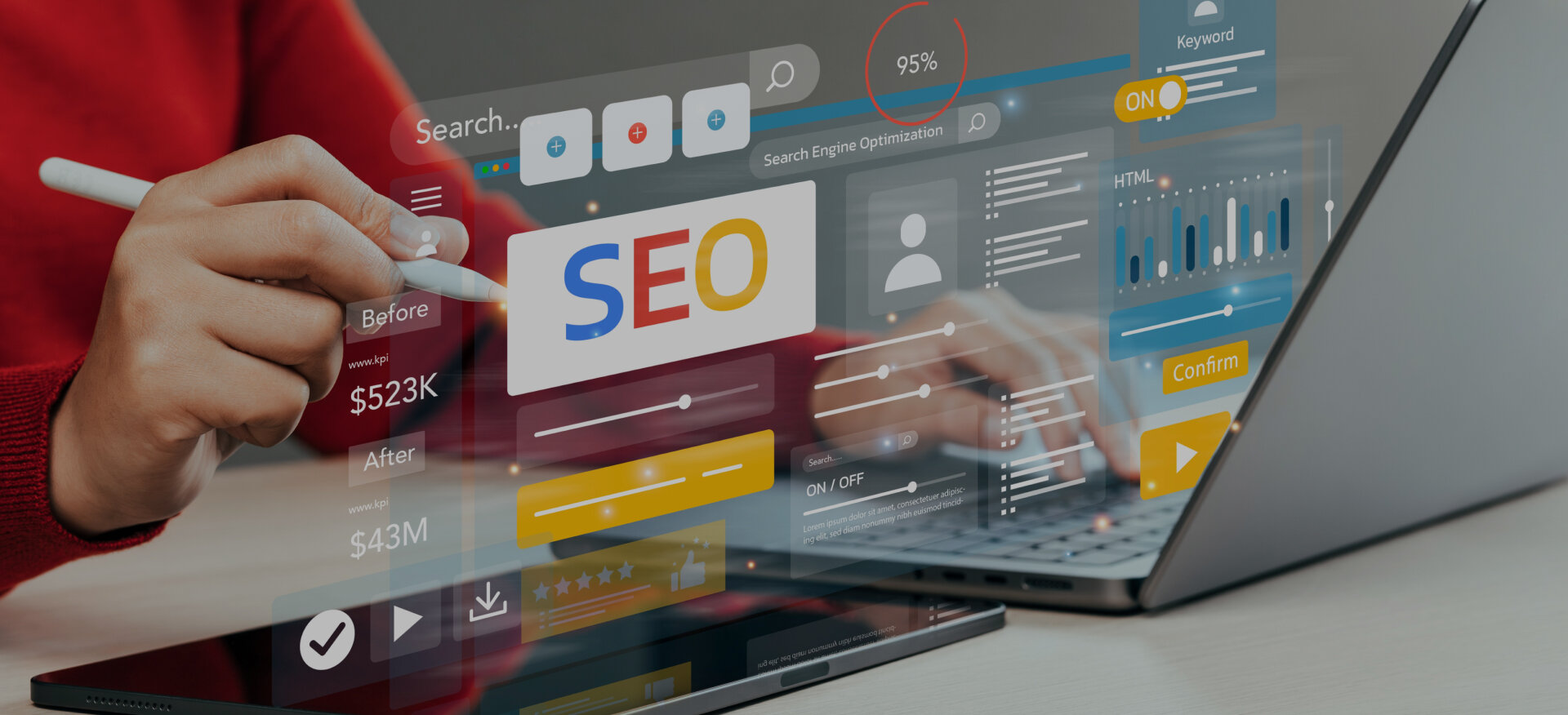When it comes to selling products online, understanding the differences between D2C (Direct-to-Consumer) and B2C (Business-to-Consumer) models isn’t just a fancy business school exercise, it’s what separates a growing brand from one that gets lost in the shuffle.
These models shape how you reach your customers, how much control you have, and ultimately, how your business makes money.
In today’s digital marketplace, choosing the right business model can mean the difference between building loyal fans and running after the next quick sale.
Whether you’re thinking about launching a brand or just trying to make sense of why certain companies seem to connect so well with their audience, digging into D2C vs B2C is essential.
Let’s break down why this choice matters for your strategy and how it shapes lasting customer relationships.
Understanding the D2C and B2C Business Model Landscape
Let’s make it simple: D2C means a company sells its products straight to you, no stopovers, no middlemen.
You buy from their website, maybe in their physical store, or through their app, they own the whole journey.
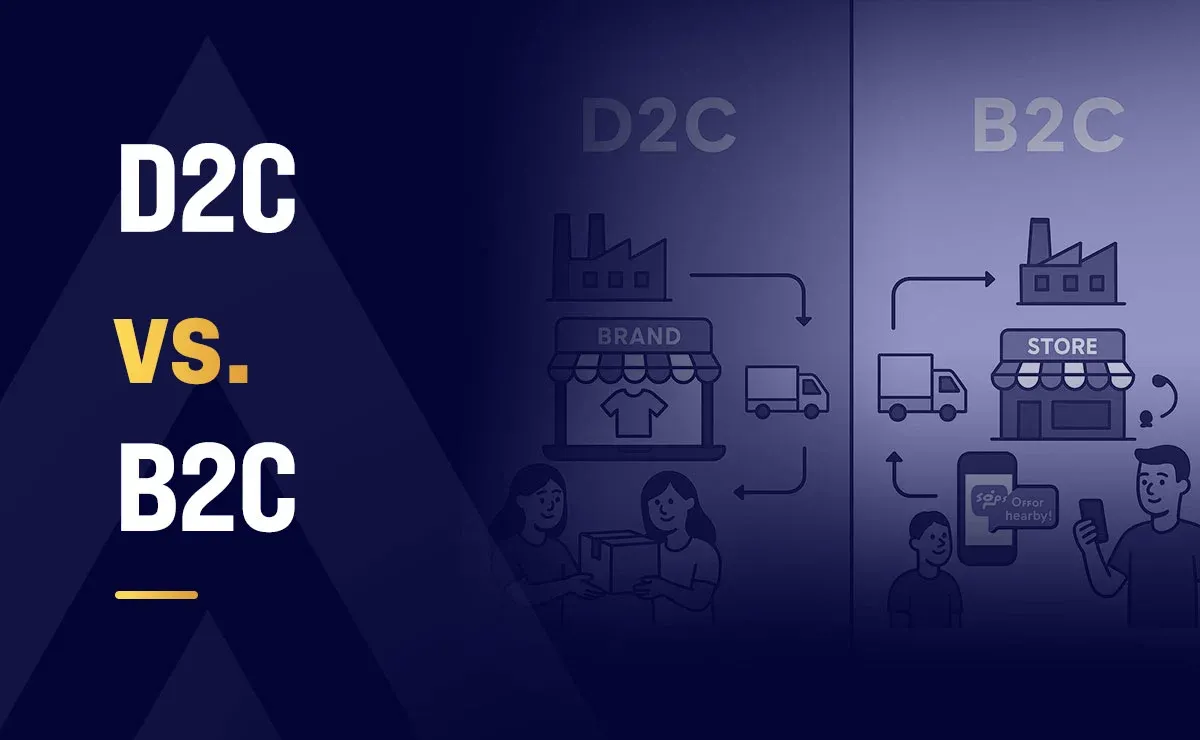
D2C refers to brands that want control over how their stuff is sold, priced, and delivered. It cuts out retailers and wholesalers completely.
B2C, on the other hand, is the classic way: manufacturers or brands sell to retailers or platforms, and those folks sell to consumers.
Think about picking up sneakers at a department store or buying electronics from Amazon, those are B2C channels, with lots of hands between the maker and the buyer.
Why does this matter now more than ever? The digital transformation of retail has shaken things up.
Thanks to ecommerce development, fast shipping, and social media marketing, brands have a new opportunity to own their story, their pricing, and their data.
That’s led to the rise of D2C disruptors across every industry, but B2C channels remain powerhouses for scale and reach.
So, understanding both models is key: D2C gives brands agility and intimacy with customers, while B2C offers broad exposure and convenience.
The path you pick could decide your brand’s future, especially as consumer expectations keep evolving in the digital age.
How D2C and B2C Work?
B2C sells products through third-party retailers, reaching large audiences quickly. D2C cuts out the middleman, allowing brands to sell directly to consumers, giving them more control over pricing and customer experience.
Each approach has its benefits and challenges, with many brands combining both for optimal reach and growth. B2C web development allows brands to integrate their products with large e-commerce platforms, maximizing exposure and scale, but with less control.
1. D2C Model
D2C (Direct-to-Consumer) brands sell directly to their end customers. They use their own platforms, websites, branded physical stores, or dedicated apps.
There’s no third-party retailer taking a cut or making the rules. All sales, from browsing to checkout, happen on the brand’s turf.
Every customer interaction is direct. That means your brand handles marketing, customer service, shipping, and returns.
These businesses often rely on digital tools like Shopify or WooCommerce to run efficient online stores.
They use their own CRM systems, email lists, and social media DMs to manage relationships and gather valuable feedback.
This structure lets companies deliver consistent experiences, control messaging, and adapt quickly.
It also means they have to do everything themselves, logistics, tech support, and marketing fall squarely on their shoulders.
2. B2C Model
B2C (Business-to-Consumer) companies, in contrast, reach shoppers through third-party retailers, wholesalers, or giant e-commerce platforms like Amazon.
The retailer or platform manages the sales, listings, and often even the customer support. Brands typically supply the products and let the intermediary handle the consumer-facing side.
Customer interactions get filtered through someone else's storefront. Product placement, returns, and promotions may follow the retailer’s policies.
The actual seller may not even be the brand but Amazon or Walmart’s distribution wing. It’s more about volume and scale, with less focus on one-to-one communication.
While B2C means you can reach wider audiences overnight, you sacrifice control and usually hand over a share of revenue through retail markups or platform fees.
Logistics and customer data aren’t fully in your hands.
Explore Our B2C Web Design & Development Services!
D2C vs B2C: 7 Key Differences
D2C and B2C models part ways in some big ways. The most obvious is who directly sells to the customer, D2C cuts out the middleman, while B2C keeps them in play.
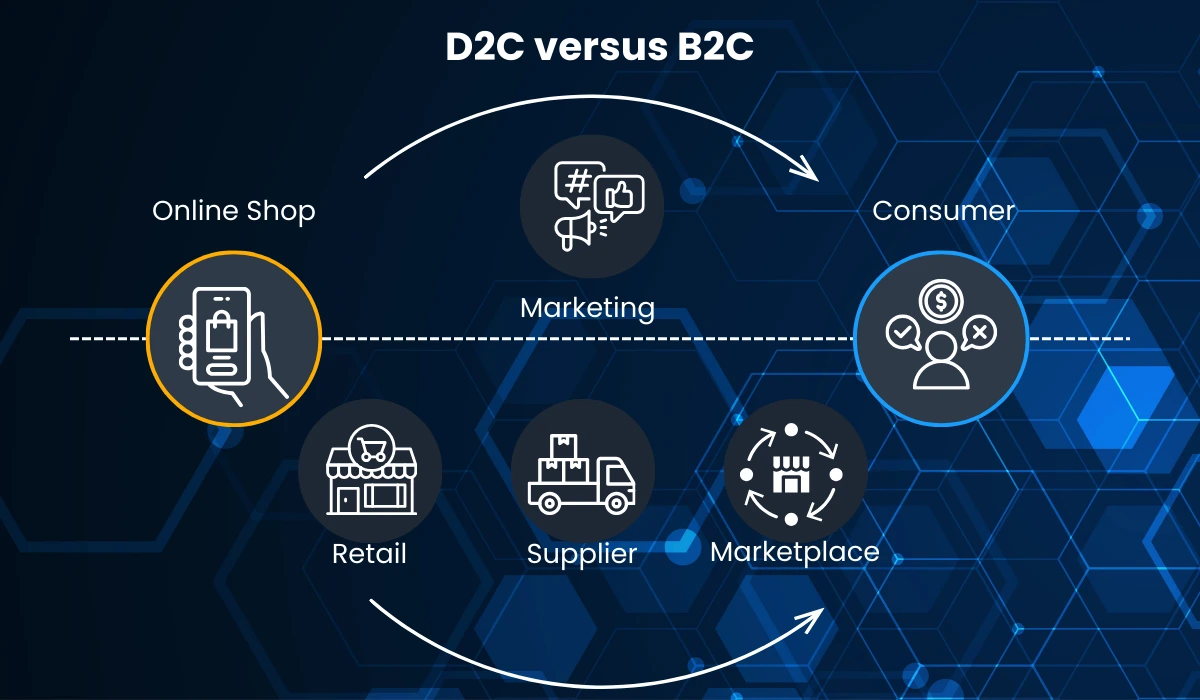
But there’s more on the line than just “who gets the sale.”
D2C means you own your brand identity, customer experience, and how your products show up at every step.
You’ll have access to first-party data, meaning you know what your customers want, when they buy, and why.
But it also means more operational complexity and direct responsibility for everything from tech to fulfillment.
B2C brands can scale quickly, tap into big retail networks, and leverage the trust of established shopping platforms.
On the flip side, they trade away brand control, profit margins, and rich customer data in exchange for access to a massive audience.
In practice, where you land on the D2C vs B2C spectrum will shape your marketing, your logistics, and even your long-term growth potential.
1. Distribution Channels
- D2C Distribution: D2C brands sell directly through owned channels like their website, custom apps, or branded physical stores. Every order goes straight from the brand to the customer, so there are no outside gatekeepers to influence pricing or product placement.
- B2C Distribution: B2C companies distribute products via third-party retailers or large e-commerce platforms, think Amazon, Walmart, or department stores. They hand over part of the customer journey to retailers, who set their own rules for sales, returns, and promotions.
- Key Difference: In a D2C setup, you fully control your distribution strategy and customer touchpoints. With B2C, you’re dependent on the retailer’s systems and exposure. This difference is crucial, especially for brands that want to launch through emerging product launches or need custom e-commerce solutions as part of their digital transformation.
The takeaway? D2C gives you the steering wheel, but B2C often puts you in the middle of a busy highway filled with shoppers ready to buy.
2. Customer Relationship Management
- D2C Relationship Management: D2C brands interact directly with customers in every phase of the journey, from first click to post-purchase support. This means more room for personalized service, targeted marketing, and tailored loyalty programs based on what customers actually do and say.
- B2C Relationship Management: B2C brands have less visibility into the individual consumer. The retailer handles the transaction and often owns the customer support interaction. Your brand may get some sales data, but most relationships, good or bad, are filtered through the retailer.
- Key Benefit: D2C’s direct relationship enables things like advanced CRM tools, automated marketing, and unique rewards programs. Brands looking to build or manage their store can leverage the best eCommerce platforms to get the most out of personalized engagement, from product management to email campaigns.
The bottom line: D2C is primed for personalized relationships and data-driven customer loyalty, while B2C has to roll with whatever contact info the retailer shares.
3. Brand Control and Identity
- D2C Brand Control: In the D2C world, you control every piece of your brand, how it looks, sounds, feels, and delivers. Your website, packaging, and even customer service scripts are all on brand, every single time. You decide what the shopping experience feels like.
- B2C Brand Influence: B2C brands often have to play by the rules of the retailer or marketplace. That means store managers can change your display, tone down your messaging, or bundle your products with competitors. Your brand voice might get muffled along the way.
- Key Takeaway: D2C lets you create a brand from scratch and keep it consistently unique. Interested in setting up the right foundation? Tips on how to start an eCommerce business can help you align your business model and brand identity from the beginning.
With D2C, every customer gets the full brand experience, no watered-down version. B2C, meanwhile, means trusting third parties not to dilute your identity.
4. Pricing and Margins
- D2C Profits: Since D2C brands cut out intermediaries, they don’t have to share revenue with retailers or juggle wholesale price expectations. That means they can set prices, adjust quickly to market changes, and enjoy higher profit margins overall.
- B2C Margins: B2C sellers get hit with retailer and platform fees. Big-box stores or e-commerce marketplaces tack on their own markups, so a chunk of your revenue is gone before you ever see the sale.
- Key Insight: If you want more pricing flexibility and margin control, D2C is the way to go. B2C models, even with innovative digital experiences, tend to have lower profits per item and are more vulnerable to pricing pressure from retailers.
D2C’s reward is in the margins, but you pay for it with more work. B2C is about moving lots of product quickly, but often at slimmer profits.
5. Customer Data and Insights
- D2C Data Collection: D2C businesses get customer data straight from the source. Every purchase, site visit, and support chat is yours to log, analyze, and act upon. This lets you optimize marketing, personalize future offers, and track customer journeys end-to-end.
- B2C Data Blind Spots: In B2C, customer data is often limited or shared in aggregate. Retailers and platforms hang onto most of the transaction data and only trickle down basic insights. You don’t truly “know” your customer as deeply.
- Key Advantage: D2C is a marketer’s dream for first-party insights and growth marketing strategies. If leveraging analytics and data-driven campaigns is your goal, it pays to follow growth marketing best practices or invest in digital marketing tools.
With D2C, you know who bought, what they looked at, and what makes them happy. B2C’s data flow is more like a leaky faucet, sometimes enough, often not.
6. Scalability and Reach
- D2C Scalability: Scaling a D2C business can be time-consuming and costly. There’s no retail network to plug into, so brands must build their own audience, invest in marketing, and scale logistics themselves.
- B2C Scalability: B2C brands can roll out to hundreds or thousands of locations quickly using established retail networks and marketplaces. Getting your product onto major shelves or online stores opens up huge audiences almost overnight.
- Key Reality: B2C offers wider, faster reach with less upfront investment, while D2C businesses need to invest heavily in marketing and delivery to grow. Smart strategies for digital marketing and broad online reach can help bridge some of the gap, but it’ll never be apples-to-apples.
7. Marketing Strategies
- D2C Marketing: Brands going D2C lean into creative storytelling, influencer partnerships, content marketing, and direct engagement on Instagram, TikTok, and their own sites. It’s about building a loyal audience with clever campaigns and one-on-one interaction.
- B2C Marketing: B2C marketing often scales through traditional means, TV ads, retail promotions, print media, and digital campaigns that target wide audiences. Retailers may run their own sales and promos, not always in line with your own strategy.
- Key Perspective: D2C needs a powerful digital presence and modern sales funnels, such as those found in effective ecommerce marketing strategies. B2C’s muscle is sheer reach, sometimes at the cost of personal touch.
D2C vs B2C: Comparison at a Glance
While both D2C and B2C models focus on selling directly to consumers, they differ significantly in approach, control, and customer experience, here’s a quick comparison at a glance.
| Category | D2C (Direct-to-Consumer) | B2C (Business-to-Consumer) |
|---|---|---|
| Distribution | Sells directly through owned channels (website, app, brand store). | Sells via third-party retailers or online marketplaces. |
| Customer Relationship | Direct connection with customers; manages full customer experience. | Indirect relationship; retailer controls most interactions. |
| Brand Control | Full control over branding, messaging, and experience. | Shared control; retailers may alter presentation or messaging. |
| Pricing & Margins | Higher margins; brand sets its own prices. | Lower margins; retailers add markups or fees. |
| Customer Data | Access to detailed first-party data and insights. | Limited access to customer data; mostly aggregate reports. |
| Scalability | Slower growth; must build audience and logistics independently. | Faster growth via established retail networks and large audiences. |
| Marketing | Personalized digital marketing, storytelling, and influencer campaigns. | Broad, traditional marketing often run by retailers. |
E-Commerce Website Design & Development Services!
Pros and Cons Of D2C and B2C
Both D2C and B2C offer unique advantages and challenges. While B2C provides broad reach through third-party retailers, D2C offers more control and higher margins.
Understanding the pros and cons of each model helps brands choose the best approach to fit their goals and resources.
Pros of B2C
- Broad Reach: Tap into vast consumer bases through established retailers and e-commerce platforms.
- Faster Scaling: Scale operations quickly through third-party distribution and retail partnerships.
- Less Operational Complexity: Retailers manage much of the logistics, inventory, and post-sale support.
- Brand Exposure: Getting featured on large platforms like Amazon or Walmart boosts visibility and increases consumer trust.
Cons of B2C
- Lower Margins: Retailers and platforms take their cut, squeezing profit margins.
- Limited Control: You don’t set the rules, pricing, branding, and experience are often dictated by the retailer.
- Dependence on Third Parties: Changing platform algorithms or policies can suddenly impact sales.
Pros of D2C
- Higher Profit Margins: Cutting out the middleman means more money stays in your pocket.
- Complete Control: You command every touchpoint, from website to packaging to customer service.
- Direct Customer Relationships: First-party data and feedback enable tailored marketing and better product development.
- Brand Loyalty: Customers feel a stronger bond, which can boost repeat business and referrals.
Cons of D2C
- Slower Scaling: You’ll need to work harder (and invest more) to get your brand in front of large audiences.
- Higher Operational Costs: Managing everything yourself, logistics, support, marketing, requires real resources.
- Limited Reach: Without the help of big retail networks, it’s tougher to reach new customers en masse.
For a closer look at channel marketing and conversion strategies, you might want to compare tactics like SEO vs PPC and SEO vs SEM when planning your approach.
D2C Company Examples Driving Digital Innovation
- Warby Parker: Eyewear brand that revolutionized the market by selling glasses directly online, letting customers try before they buy, and skipping retail markups. Their D2C approach reshaped how people shop for specs.
- Glossier: Beauty startup that built its following almost entirely on social media and sells exclusively through its website and stores, creating cult-like loyalty with direct engagement.
- Allbirds: Footwear leader that bet on D2C e-commerce to highlight sustainable materials and a minimal, transparent story, no retail partners, just a tight brand experience.
Each brand’s success highlights how D2C can drive digital innovation by owning the customer journey and redefining entire industries, from beauty to tech to food.
For industry-specific strategies, see also tech marketing and luxury branding approaches shaking up the status quo.
B2C Brand Examples and Their Market Reach
Some of the world’s most recognizable brands operate on a B2C model, tapping into platforms and retail channels to achieve massive scale.
Amazon, for example, lists products from countless brands globally, providing unparalleled reach.
Netflix and Spotify use their digital platforms to deliver entertainment directly to millions, but rely on app ecosystems and smart TV channels for distribution.
Other verticals, such as entertainment and real estate, show how B2C strategies can cross digital and physical boundaries for omnichannel impact.
Big names like Walmart and Zara scale fast thanks to B2C’s efficiency, think distribution first, brand touch second.
Choosing Between D2C and B2C for Your Business Strategy
Picking D2C or B2C comes down to your brand goals, how much control you want, and your appetite for risk and complexity.
If you value brand independence, crave rich customer data, and have resources to run the entire operation, D2C might be right for you.
It’s a slower road, but the payoffs can be bigger over time.
If you need speed, scalability, and broad exposure, especially for established products, B2C’s partnerships and retail channels provide instant market reach with less upfront work. The tradeoff is less control and lower margins.
Brands with hybrid ambitions can blend both and sell directly for higher margins and richer insights, while distributing through retail networks or build custom e-commerce platforms for direct engagement.
Consider factors like your budget, digital expertise, target demographic, and how quickly you need to reach the market before making a move.
Hybrid Models: The Rise of D2C vs B2C Blended Approaches
- Omnichannel Selling: Brands offer products in physical stores, online marketplaces, and via their own e-commerce platforms. Think national grocery brands available in Walmart and through their own online shop.
- Retail Partnerships: Some companies launch products with third-party retailers before rolling out to direct channels. This gets them quick exposure and builds early brand buzz.
- D2C-First, Retail-Second: Many modern brands start purely online, perfect their direct sales, then move into retail when demand grows. It’s a way to test products and messaging with less risk.
- Data-Driven Innovation: By owning first-party data through D2C channels, brands develop better targeting strategies before expanding, as suggested in digital marketing guides.
- Hybrid Integration Tips: To make a blended approach work, ensure operations are aligned, invest in unified CRMs, and maintain a consistent brand experience across all touchpoints.
Hybrid models may sound complex, but they offer the flexibility to maximize reach and maintain control, ideal for scaling in today’s fragmented retail environment.
Frequently Asked Questions
Is Amazon a B2C or D2C?
Amazon is B2C, it connects businesses to consumers via an online marketplace, not direct from brand to buyer. (For example, many companies manage their product data or content via SharePoint AI tools integrated with intranet software that integrates with Office 365.)
Is Nykaa D2C or B2C?
Nykaa operates as both B2C and D2C, it sells multiple brands (B2C) and its own private labels directly to customers (D2C). (Teams often organize campaigns using SharePoint forms and sync SharePoint to File Explorer for collaboration.)
Is Shopify B2C or D2C?
Shopify is a D2C platform, it helps brands sell directly to consumers through their own websites. (You can even manage product files or backups via SharePoint backup tools within a SharePoint site collection.)
Is DTC the same as B2C?
They’re related but not identical, DTC (Direct-to-Consumer) is a subset of B2C, where brands sell straight to consumers without intermediaries. (In business terms, managing this via a SharePoint site collection or intranet software that integrates with Office 365 improves data flow and governance.)
What is the main difference between D2C and B2C?
The main difference lies in how products are sold. D2C businesses sell directly to consumers, while B2C businesses rely on intermediaries like retailers.
Is D2C better than B2C?
It depends on the business model. D2C can offer higher margins and better customer relationships, while B2C provides broader reach and faster scalability.
If you're looking for how to increase conversion rate on your website, D2C might be the better fit.
Can a company be both D2C and B2C?
Yes, some businesses operate both models, for example, selling directly to consumers via their own website and through third-party retailers at the same time.
What are the benefits of D2C over B2C?
D2C businesses have more control over their brand, customer relationships, and data, which leads to better customer experiences and higher profit margins.
How do marketing strategies differ for D2C and B2C businesses?
D2C businesses focus more on digital marketing, content, and influencer partnerships, while B2C businesses often use traditional retail promotions and large-scale advertising.
Conclusion
When comparing D2C vs B2C business models, control, margins, data access, and scalability are central to the discussion. D2C gives brands a tight grip on their destiny, controlling messaging, fostering loyalty, and pocketing the lion’s share of revenue. B2C, meanwhile, is built for instant scale and exposure but trades away control and profits for access to big audiences. Strategically, the best choice depends on where you see your business in the next five years. If building a community and brand legacy is your goal, D2C may be the ticket. If fast growth and broad distribution are your focus, B2C or a hybrid approach makes sense, especially in crowded markets. As digital strategy leaders like Centric emphasize, hybrid models are rising fast, blurring the lines with direct and partner-driven approaches to reach, profit, and loyalty. Looking forward, expect even more crossover as brands get savvier with data, tech integration, and customer engagement. Hybrid models are rising fast, blurring the lines with direct and partner-driven approaches to reach, profit, and loyalty. Ultimately, the brands that adapt to consumer needs and changing technology will lead the way, no matter the model they choose.
